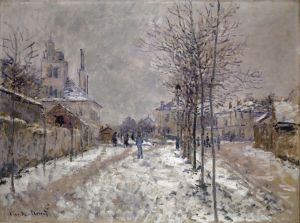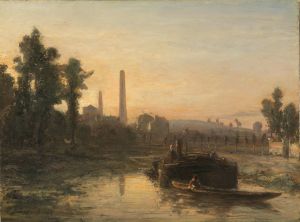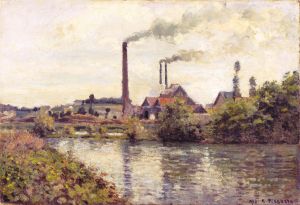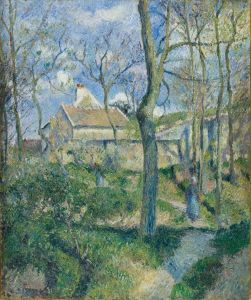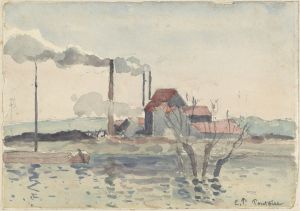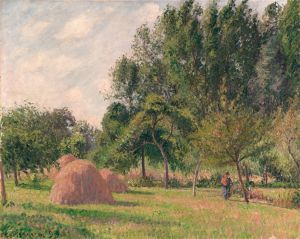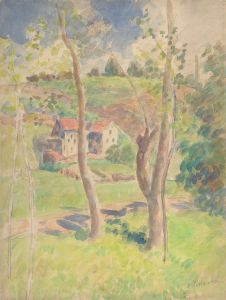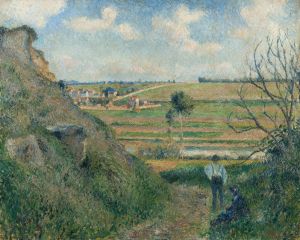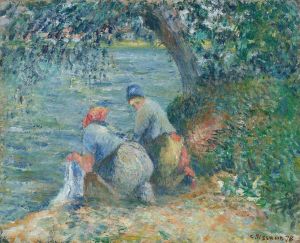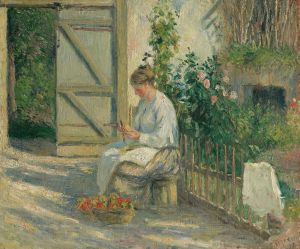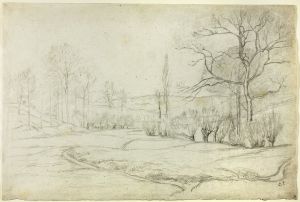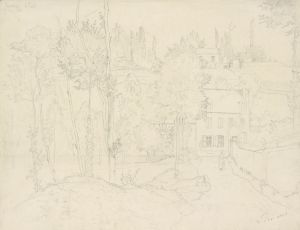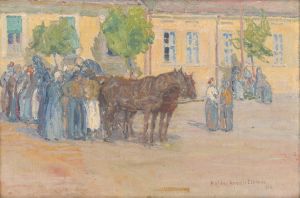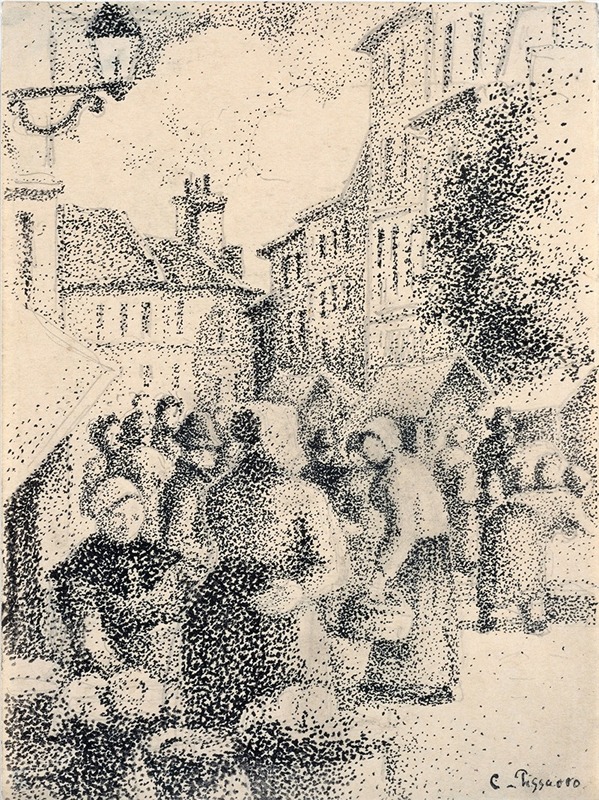
Marketplace in Pontoise
A hand-painted replica of Camille Pissarro’s masterpiece Marketplace in Pontoise, meticulously crafted by professional artists to capture the true essence of the original. Each piece is created with museum-quality canvas and rare mineral pigments, carefully painted by experienced artists with delicate brushstrokes and rich, layered colors to perfectly recreate the texture of the original artwork. Unlike machine-printed reproductions, this hand-painted version brings the painting to life, infused with the artist’s emotions and skill in every stroke. Whether for personal collection or home decoration, it instantly elevates the artistic atmosphere of any space.
"Marketplace in Pontoise" is a painting by the renowned French artist Camille Pissarro, created in 1882. Pissarro, a pivotal figure in the Impressionist movement, is celebrated for his depictions of rural and urban French life, and this particular work exemplifies his keen observation of everyday scenes and his mastery of capturing light and atmosphere.
The painting portrays a bustling market scene in the town of Pontoise, located in the Île-de-France region, northwest of Paris. Pontoise was a significant location for Pissarro, as he lived there for several years and produced numerous works inspired by the town and its surroundings. This period was crucial in Pissarro's artistic development, as he explored various techniques and themes that would define his contribution to Impressionism.
In "Marketplace in Pontoise," Pissarro employs his characteristic loose brushwork and a vibrant palette to convey the lively atmosphere of the market. The composition is filled with figures engaged in various activities, such as buying and selling goods, which reflects the social dynamics and the everyday life of the town's inhabitants. Pissarro's attention to detail is evident in the depiction of the market stalls, the variety of goods on display, and the interactions between the figures, all of which contribute to the painting's dynamic and animated quality.
The use of light in the painting is particularly noteworthy. Pissarro skillfully captures the play of natural light across the scene, creating a sense of depth and movement. The dappled sunlight filtering through the trees adds a layer of complexity to the composition, highlighting the textures and colors of the market and its participants. This technique is a hallmark of Pissarro's work and demonstrates his ability to convey the transient effects of light and atmosphere, a central tenet of the Impressionist movement.
Pissarro's choice of subject matter in "Marketplace in Pontoise" reflects his interest in the lives of ordinary people and his commitment to portraying them with dignity and respect. Unlike some of his contemporaries who focused on more glamorous or exotic subjects, Pissarro found beauty and significance in the mundane aspects of daily life. This democratic approach to art was a defining characteristic of his oeuvre and contributed to his reputation as a socially conscious artist.
The painting is also significant for its historical context. Created during a time of rapid industrialization and urbanization in France, "Marketplace in Pontoise" captures a moment of transition in French society. While the market scene itself is timeless, the painting serves as a document of a specific period in history, reflecting the changes and continuities in rural and urban life during the late 19th century.
Today, "Marketplace in Pontoise" is held in high regard as an exemplary work of Impressionist art. It continues to be studied and admired for its technical brilliance, its insightful portrayal of everyday life, and its contribution to the broader narrative of art history. Pissarro's work remains influential, and "Marketplace in Pontoise" stands as a testament to his enduring legacy as a master of capturing the essence of human experience through art.





